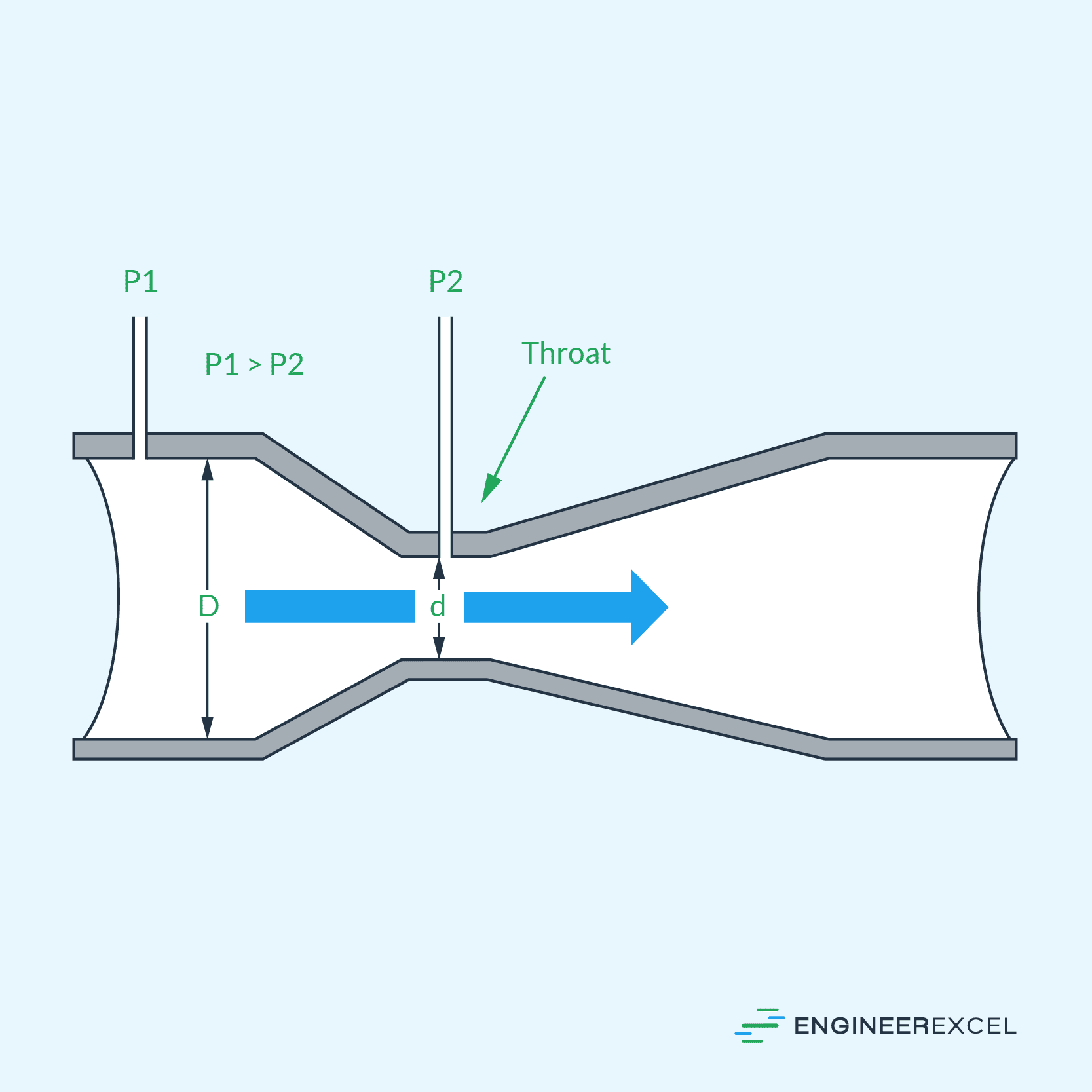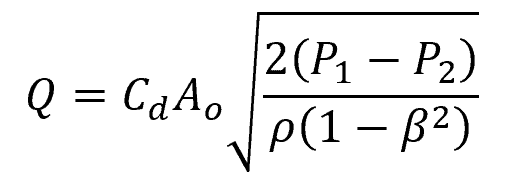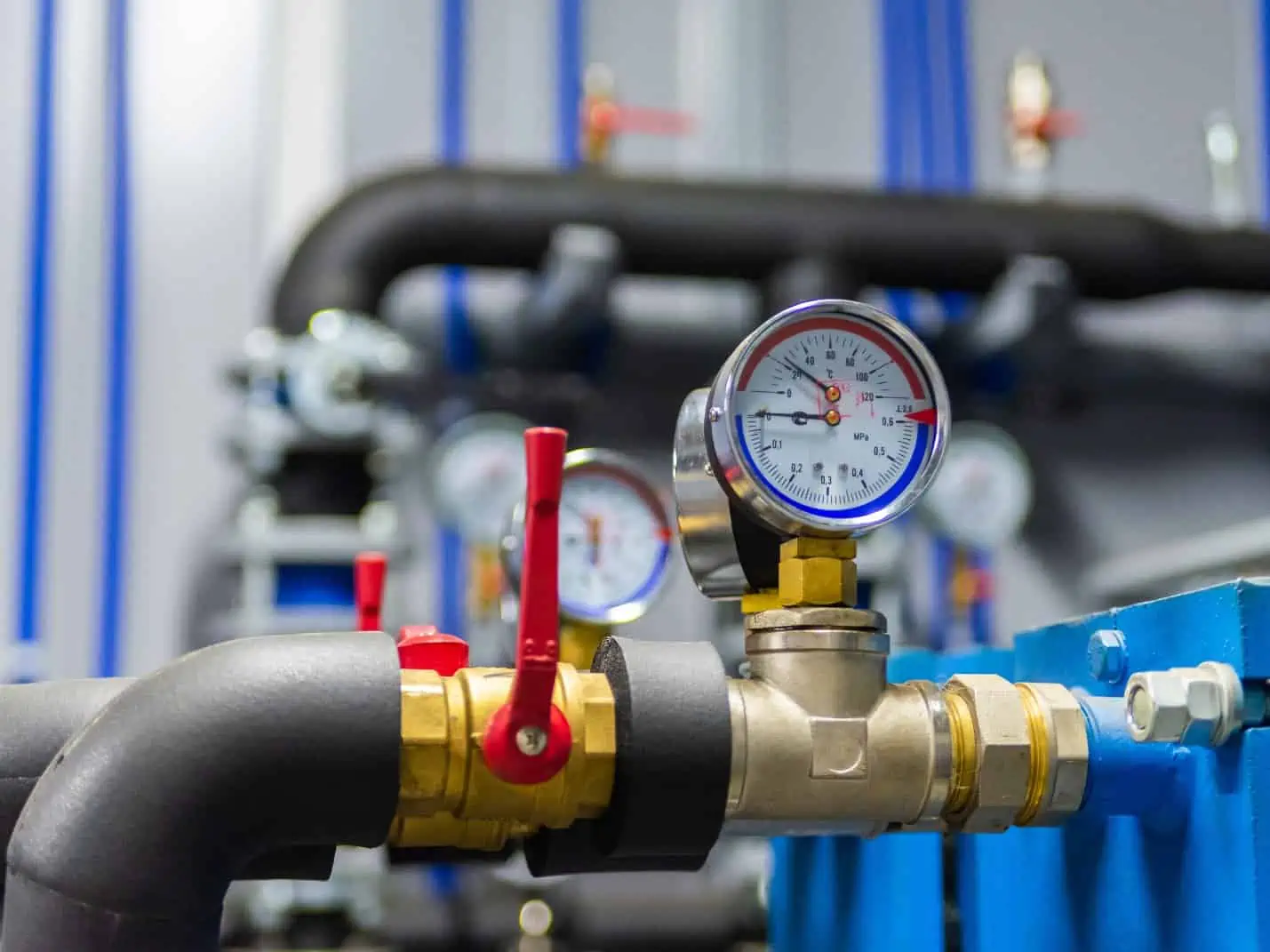A Venturi flow meter is a device used to measure the flow rate of fluids in a pipeline. It works by introducing a constricted section in the pipe to create a pressure drop, which is then measured to determine the flow rate.

This article provides a comprehensive introduction to venturi flow meters, covering their structure, operation, applications, as well as their advantages and disadvantages.
What is a Venturi Flow Meter
A Venturi flow meter is a device that measures the flow rate of fluids in a pipeline. It utilizes the Venturi effect, a phenomenon in fluid dynamics when a fluid’s pressure decreases as its speed increases. You can find this flow meter integrated into systems where accurate and reliable flow measurements are crucial.
The meter’s core component is a specially designed constriction, called the Venturi tube, that narrows the flow path. As the fluid passes through this constriction, its velocity increases, and the pressure drops, creating a difference in pressure between the narrow and wide sections of the flow meter. This pressure difference is proportional to the fluid’s flow rate, enabling easy flow rate calculation.

Elevate Your Engineering With Excel
Advance in Excel with engineering-focused training that equips you with the skills to streamline projects and accelerate your career.
The typical structure of a Venturi tube is shown in the figure below.

Working Principle of Venturi Flow Meter
A Venturi flow meter works on the principle of Bernoulli’s equation, which states that the sum of potential energy, kinetic energy, and pressure energy remains constant along a streamline. As fluid flows through the meter, it experiences a restriction in the form of a converging section called the throat. This restriction causes an increase in the fluid’s velocity and a corresponding decrease in pressure.
The pressure difference between the inlet of the meter and the throat is directly proportional to the flow rate of the fluid. You can determine the flow rate by measuring this pressure drop and using the Venturi equation, shown below. The equation takes into account the geometry of the meter, the fluid density, and the energy conservation principle.

Where:
- Q = flow rate [m3/s]
- Cd = discharge coefficient of the venturi meter [unitless]
- Ao = area of the throat [m2]
- P1 = pressure at the inlet [Pa]
- P2 = pressure at the throat [Pa]
- ρ = density of the fluid [kg/m3]
- β = ratio of the throat diameter to inlet diameter [unitless]
The Venturi flow meter provides a non-invasive and reliable way to measure flow rates in various applications. It exhibits minimal pressure loss, making it suitable for high-flow processes and sensitive systems. Additionally, the flow meter is virtually maintenance-free, with no moving parts, thus reducing downtime and improving efficiency.
Components of Venturi Flow Meter
Venturi Tube
A Venturi flow meter consists of a Venturi tube, which is a short, tapered section of pipe that constricts the flow area, causing a pressure drop. The construction typically involves a converging inlet, a throat, and a diverging outlet, as shown in the diagram above. This design allows for smooth and efficient flow with minimal energy loss.
Pressure Connections
Aside from the Venturi tube, a Venturi meter typically includes two pressure connections. The first is the upstream pressure tapping, typically located at a distance of one-half of pipe diameter upstream of the convergent entry. The second is the downstream pressure tapping, located in the throat.
Differential Pressure Meter
The pressure difference across the pressure tapping can be measured using a differential pressure meter or device, such as a U-tube manometer, an inclined-tube manometer, or a digital differential pressure transmitter.
Applications of Venturi Flow Meter
A Venturi flow meter is commonly used in various industries due to its versatility and accuracy. You will often find it in wastewater treatment plants, chemical plants, and power generation facilities. Its effectiveness in handling harsh environments and corrosive fluids makes it a reliable choice for these applications.

Another notable application of a Venturi flow meter is in the oil and gas sector. It measures the flow of fluids such as crude oil, natural gas, and water, ensuring optimal production levels and efficient operations. In addition, its low-pressure drop feature results in energy savings, making it a preferred choice in this industry.
Venturi flow meters are also applied in irrigation systems and water distribution networks. By determining water flow rates accurately, you can manage resources more efficiently and prevent wastage. Furthermore, their robustness allows them to remain operational with minimal maintenance, reducing long-term costs for a range of applications.
Advantages of Venturi Flow Meter
A Venturi flow meter offers several benefits. First, it delivers precise flow measurement. The Venturi flow meter’s design ensures high accuracy and repeatability.
Second, it provides low-pressure loss compared to other flow meters. The unique shape of the Venturi tube helps minimize pressure loss, allowing for efficient operation. This aspect makes it suitable for different applications, including high-pressure systems.
Another advantage is its durability and low maintenance requirements. Venturi flow meters are made of robust materials, making them resistant to wear and tear. You can expect a long service life, which reduces the need for frequent maintenance and replacements.
Lastly, Venturi flow meters can handle various types of fluids, including liquids, gases, and steam. Their versatility ensures consistent performance across multiple industries, such as water treatment, oil and gas, and power generation.
Disadvantages of Venturi Flow Meter
While Venturi flow meters offer several advantages, they also have some drawbacks. One of the main disadvantages is the high initial cost. Due to their complex construction and materials, purchasing and installing a Venturi flow meter can be expensive.
Another issue is their inflexibility in terms of flow rate capacity. Venturi meters have a fixed flow rate capacity upon installation and operation, which can limit their use in applications with varying flow rates.
Factors Influencing Accuracy
Several factors can influence the accuracy of a Venturi flow meter. Understanding these factors allows you to optimize your meter’s performance.
Accuracy mainly depends on the correct installation and dimensions of the meter. You should follow the manufacturer’s guidelines when installing your meter. Ensure that there’s sufficient pipe length before and after the meter.
The Reynolds number also plays a crucial role in accuracy. It measures the flow of a fluid through a pipe, affecting the meter’s performance. You should maintain a relatively high Reynolds number to increase accuracy.
Fluid properties, such as viscosity, density, and temperature, directly impact the performance of a Venturi flow meter. You must account for these properties during measurements as conditions change.
Lastly, regular maintenance and calibrations can help enhance your Venturi flow meter’s accuracy. Clean the meter and ensure that there is no buildup or corrosion. Check the pressure transmitters and establish a calibration schedule.
